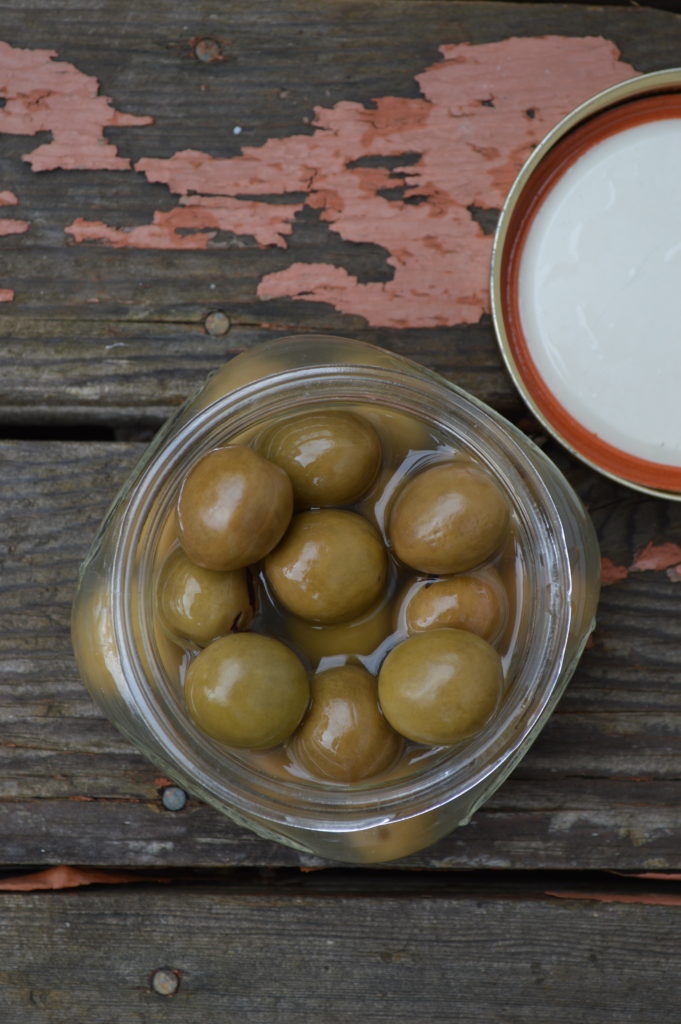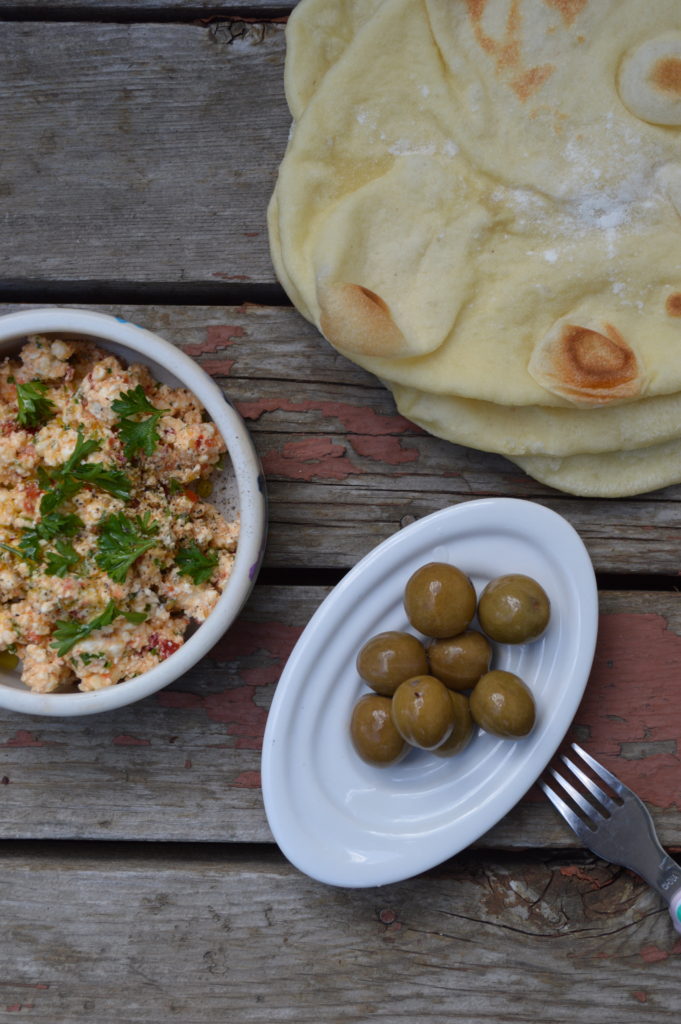
Right off the hop: I stole this idea from Ben Staley. He made “Green Plum Cured like an Olive” at Alta (RIP) and it really blew my mind. Not sure if he is serving these at Yarrow or not. After my meal at Alta I talked to Ben briefly and asked how he made the plum olives. If I remember right he said they were fermented in brine, then pressure-cooked with a bit of vinegar. I’ve since done some research and it turns out that pickled green plums are actually quite common across North Africa and the Middle East. Still, I owe Ben for introducing me to the concept.
To be clear we are talking about plums that are green because they are not yet ripe, not plums that are green when ripe like Greengage.
By the beginning of August this year I was starting to worry about our Japanese plum trees. They had tremendous fruit set, and many of the young branches were bowed under the weight of the fruit. The trees had done a pretty good job of thinning themselves, dropping tiny plums all through summer, but for a few branches I decided to intervene and strip the green fruit to prevent damage.
Raw green plums are more or less inedible: super hard, super sour, and super astringent. Like possibly the most tannic thing I’ve ever put in my mouth. But fermented as you would olives or capers they become something delicious.
I submerged my green plums in a 5% brine and stored them in my basement at a cool room temperature. Kind of like these kosher dill pickles. For most vegetables a ferment like this takes a week, but I think because the plums were so hard it was a much slower process. It was three weeks before the flavour was right. Most of the olive-making procedures I read suggested changing out the water or brine several times. Every week I changed out the brine. I’m not sure this was necessary.
After three weeks the plums were a great balance of salty and sour, but there were two problems: they were still very hard, and still extremely astringent. So one last step: unlike olives, we need to cook the fermented plums in their brine. About 10 minutes of gentle simmering softens them up and dissipates most of the astringency. This cooking step does not appear in the traditional Middle Eastern recipes I researched, so I wonder if maybe they use plums that are a little further on in development than what I used.
It’s remarkable how much these look and taste like olives. Really the only giveaway is the stone: it doesn’t have the round cross-section of an olive pit, and it comes away from the flesh of the fruit cleanly.
Pickled Green Plums
aka green plums cured like olives
Ingredients
- 1 lb green (ie. not ripe) plums
- Week 1 Brine: 25 g salt dissolved in 500 mL water
- Week 2 Brine: 25 g salt dissolved in 500 mL water
- Week 3 Brine: 25 g salt dissolved in 500 mL water
Procedure
- Put green plums in a container that fits them comfortably with a few inches of head room. Pour Week 1 Brine over plums so they are submerged. Gently weigh down plums to keep them submerged. Store at a cool room temperature, away from direct sunlight, for seven days. After the first few days, skim any foam or scum that develops on the surface of the liquid.
- After seven days, strain off the brine and discard. Pour the Week 2 Brine over the plums and store as for Week 1.
- After seven days, repeat Step 2 with the Week 3 Brine.
- At the end of the third week, transfer the plums with their brine to a pot. Bring to a boil and gently simmer till the plums are tender, roughly 10 minutes. Transfer to a jar and chill thoroughly before serving.
